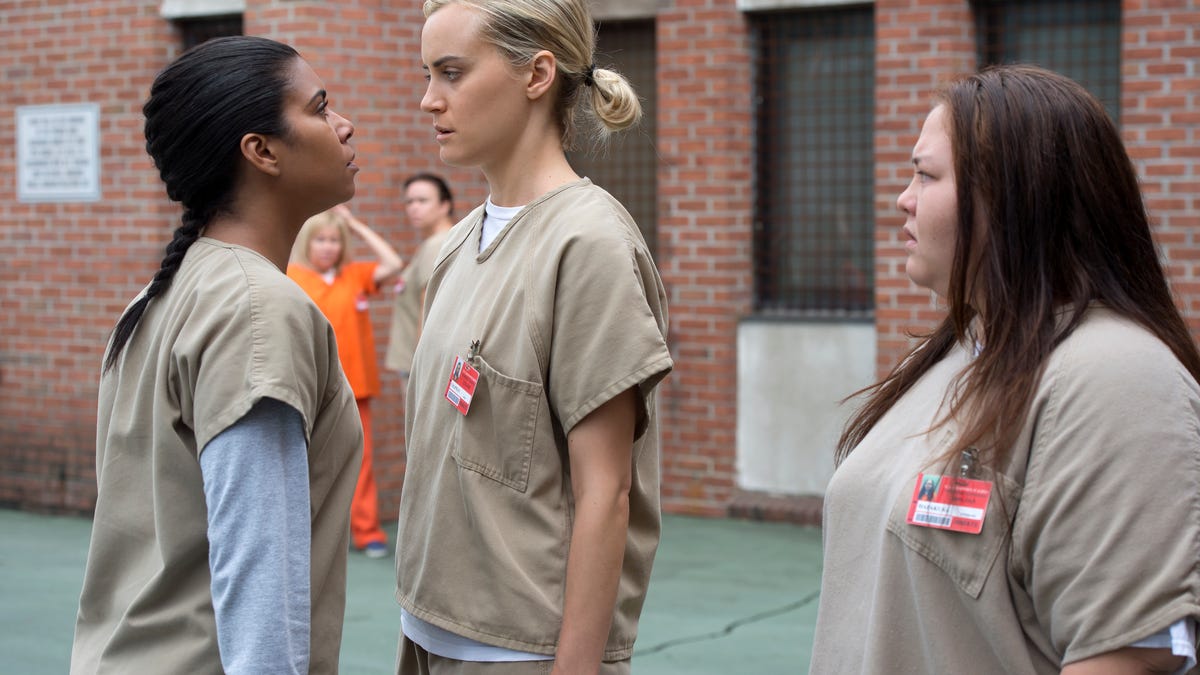Netflix's 'Orange Is the New Black' would have been cable's No. 2 show
A Nielsen report seen by The Wall Street Journal shows massive viewership numbers for the crew at Litchfield Penitentiary.

Netflix released the fourth season of "Orange Is The New Black" worldwide on June 17.
Netflix jealously guards data about the audience for its original shows, but Nielsen's attempt to puzzle it out hints that at least one of those shows really is big.
"Orange Is the New Black" pulled in 6.7 million viewers for the premiere episode of its latest season earlier this month, comparable with the second most-viewed cable drama on TV, according to a Wall Street Journal report detailing a client presentation by Nielsen, the television-ratings giant.
Nielsen has been working on a way to measure streaming-service viewing for more than a year, a mystery that has aggravated traditional television companies since Netflix kicked off its originals push in earnest more than three years ago. Because Netflix doesn't rely on advertising, the company doesn't share viewership details that regular programmers slavishly track to set rates for commercials. The cloudiness affects big TV makers' willingness to license their shows for you to stream.
But Nielsen's data can't capture the full extent of streaming-service viewing. The company uses audio files of programs like a fingerprint, and it picks up when somebody in its sample panel of about 40,000 US homes is watching a fingerprinted show on a TV. It doesn't count any viewing that occurs off a TV screen, so any binge-watching on a phone, tablet or laptop goes uncounted. And it doesn't measure audience outside the US. In January, Netflix expanded to essentially every country in the world except China.
Nielsen said that most viewing is still through formats it measures. "We have found that while consumer usage of tablets and mobile continue to grow, a majority of viewing still happens through the TV glass," a Nielsen spokesperson said.
Late last year, Netflix's head of originals, Ted Sarandos, noted that the mix of how much subscribers watch on a laptop, a big screen or an iPad differs depending on the demographic and the show. When he was asked about earlier Nielsen data that indicated Netflix had the No. 2 show on all television, he said "I bet they were wrong, I bet we were No. 1." He didn't provide any statistics to support the claim.
Netflix declined to comment on the latest report.

